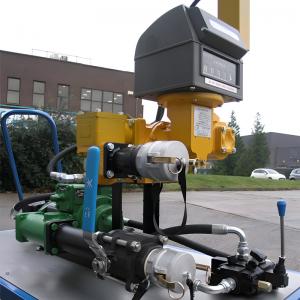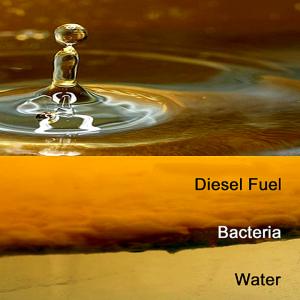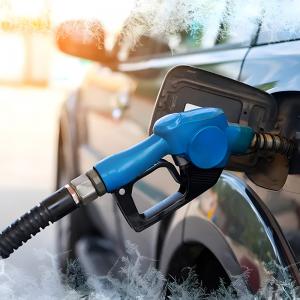Are LPG Autogas Stations Still Worth Expanding now?
LPG/Autogas Stations: Expansion or Contraction in 2025?
In the year 2025, as the wave of electric vehicles (EVs) sweeps the globe, opinions on the future of LPG/Autogas stations are sharply divided. On one hand, some argue that as a transitional fuel, there is no longer a need to expand its infrastructure, and with the rapid adoption of EVs, many investors are questioning whether there is still commercial value in investing and expanding LPG stations in 2025. On the other hand, the latest market data and Google search trends reveal a surprising reality: the demand for LPG/Autogas stations remains strong globally, and in some regions, is even showing growth. So, at this crossroads of new energy transition, is investing in and expanding LPG stations still a worthwhile endeavor?
I. 2025 Google Search Trends Reveal New Market Dynamics
By analyzing Google search trends in 2025, we can clearly see that the LPG fuel market has not declined as many expected. Instead, it has become more diversified and segmented.
-
“LPG autogas stations near me”: The sustained high search volume for this term indicates a large and active user base of existing LPG vehicles. Their urgent need to find the nearest fueling station provides a direct commercial justification for the geographical layout and coverage of LPG service stations.
-
“LPG conversion cost”: The surge in this search term reflects a high sensitivity among consumers to fuel costs, especially under economic pressure. The low price of LPG remains the biggest selling point for attracting new users, and the return on investment period for conversion costs is a key factor in their decision-making.
-
“LPG vs Electric car”: The popularity of this comparison search term shows that LPG has become an important option for consumers weighing different eco-friendly fuels. Users are no longer just comparing LPG to gasoline; they are placing it on the same scale as EVs, with a focus on the convenience of LPG at petrol stations, driving range, and initial investment.
-
“LPG fill up stations”: Compared to the more general "LPG autogas stations," this more action-oriented search term reflects user interest in the actual refueling process and convenience. This necessitates that future LPG stations not only be numerous but also well-distributed, with efficient and easy-to-use LPG equipment.
Together, these search trends paint a picture: the LPG market is not dying; it is undergoing a "repositioning." It is no longer the sole alternative to gasoline cars but has become a crucial supplement that balances cost and environmental benefits, especially for commercial vehicles, long-haul transport, and the conversion market, before EVs become fully widespread.
II. Drivers for LPG/Autogas Station Expansion
Despite the challenges of electrification, the expansion of LPG stations is underpinned by solid business logic and market drivers.
1. The Enduring Appeal of Cost Advantage In the current climate of increasing global economic uncertainty, the low price of LPG is its most significant competitive advantage. Compared to gasoline and diesel, LPG fuel costs can often save 20%-40%, which is a huge operational benefit for taxi drivers, logistics companies, and long-haul transport fleets. The continuous maturation of LPG equipment and the popularization of conversion technologies have also significantly reduced conversion costs, further shortening the return on investment period.
2. A Reassessment of Environmental Benefits LPG burns more cleanly than traditional fuels, producing fewer particulate matter (PM) and nitrogen oxide (NOx) emissions. While not zero-emission like pure EVs, LPG is considered an effective "low-carbon" transitional fuel in many regions. With increasing concern for air quality, many cities and countries have introduced policies to encourage the use of LPG vehicles, providing political support for the construction of LPG fill up stations.
3. Flexibility and Low Cost of Infrastructure Compared to EV charging stations, which require extensive grid upgrades and lengthy charging times, LPG station construction is relatively flexible and less expensive. The LPG at petrol stations model can be easily integrated into existing gas station networks, without the need for new land or infrastructure, which significantly lowers the investment barrier and operating costs. This "add-on service" model allows existing gas stations to offer a more diverse range of fuel options to customers, increasing foot traffic and revenue.
4. Strong Demand in Specific Markets In countries with a large number of LPG vehicles, such as Europe, Turkey, and South Korea, mature LPG station networks have been established. Their expansion is focused on densifying the existing network to improve service quality. In emerging markets like Southeast Asia and South America, driven by economic development and the demand for low-cost fuel, the LPG vehicle market is growing rapidly, providing immense expansion opportunities for the station network.
III. Future Challenges and Strategic Transformation
Of course, the expansion of LPG stations is not without its challenges. The rapid development of EV and hydrogen technologies, along with government policies, pose a threat to the future of LPG. Therefore, the expansion strategy for LPG stations must be innovative and transformative.
1. Embracing Diversified Energy Solutions Future LPG stations should no longer be single-fuel refueling points. They should transform into "integrated energy service centers," providing LPG fueling services alongside fast-charging stations for EVs, and even hydrogen refueling facilities in the future. This "multi-fuel" model can not only meet the needs of different vehicle types but also effectively hedge against the risks of a single fuel source.
2. Enhancing User Experience and Intelligence Future LPG service stations need to be more intelligent. Through mobile payments, membership systems, and location-based services, users can easily find stations, book refueling slots, and even get discounts. The advanced LPG equipment at the stations should be safer and faster to improve user experience and ensure safety.
3. Focusing on Specific Market Niches In the future, the expansion of LPG stations should be more targeted. Instead of blindly building stations everywhere, it is better to focus on high-demand market segments, such as areas with a high density of taxi operations, urban logistics centers, or long-distance transportation corridors. This precise positioning can maximize returns on investment and create a competitive barrier.
Conclusion
In 2025, to declare that the expansion of LPG/Autogas stations is no longer necessary would be premature. Despite the impact of new energy technologies, LPG still possesses a significant vitality thanks to its unique cost advantages, relatively clean environmental benefits, and strong demand in specific markets.
The future expansion strategy for LPG stations is not merely about increasing numbers; it is a "smart, diversified, and refined" transformation. By integrating LPG services with EV charging and other convenient services, and by focusing on high-demand niche markets, LPG stations can not only find their footing amidst the new energy wave but also serve as a bridge connecting traditional fuels to future clean energy. Therefore, for investors, now is not the time to exit, but a golden opportunity to re-evaluate and strategically plan.







